Donations of railwayana to the Bala Lake Railway are always appreciated but, very occasionally, something of great relevance suddenly appears, the kindness of which takes us by surprise. In this instance, we received a call out of the proverbial blue from a renowned collector of railwayana in Bristol, Keith Skilleter. He had been following our activities and asked if the railway would like a Hunslet loco builder’s plate for our trusty loco, Holy War, an offer we rapidly and gratefully accepted. The call arrived on a Sunday and, as luck would have it, a volunteer was due to drive up to Llanuwchllyn the following day, so contact was made and the plate was duly collected after a small deviation.
Heritage railways thrive on the kindness and generosity of not only volunteers but also that of collectors who feel that, as custodians of something truly historic, the time has come to ‘pass the baton’, so to speak. The BLR is therefore greatly indebted to Keith Skilleter for his wonderful kindness, and he has the satisfaction of knowing that his bequest has gone to the perfect home.
The month of March has been busy but activities and attendance have been tempered by the weather, in particular theSt David’s Day services on which free travel is offered to local residents, dependent on suitable paperwork. Unfortunately, it snowed – hard.
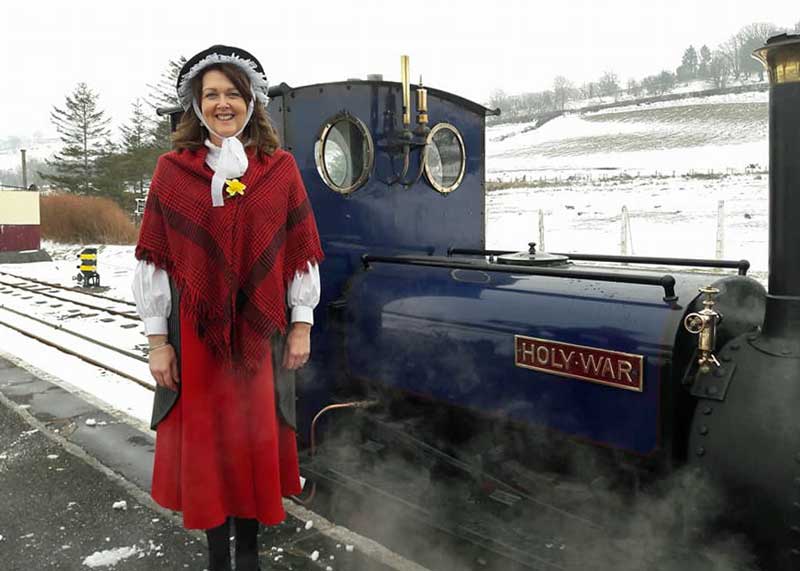
Nevertheless, a number of hardy souls arrived to enjoy what one visitor described as ‘a magical trip in a winter wonderland’. It was much appreciated that Gwynedd Council had done a sterling job of keeping the main roads clear, all necessary staff arrived on time and intrepid travellers actually had little if any trouble getting to the railway. Needless to say, the line may have been covered with snow but had been carefully checked before the first train started. While passenger numbers were not quite what we would have hoped for, those who managed to arrive enjoyed a memorable day.
As for the whole month, passenger numbers were actually up on March last year by 45% and while this sounds spectacular, one should remember that the ‘season’ started earlier this year, allied to the fact that Easter was earlier too. With such variables entering the equation, we await the beginning of May to make a more accurate assessment of the year-to-date performance.
The BLR is always delighted to accommodate ‘specials’, and in this context, Monday 26th was definitely one to remember. Winifred was steamed to haul the three Penrhyn open passenger wagons, and the whole operation was for Mr. David Jones, (not our General Manager), who is the grandson of Winifred’s last driver at the Penrhyn Quarry. Together with family and friends, all who were there enjoyed a very special and poignant day.
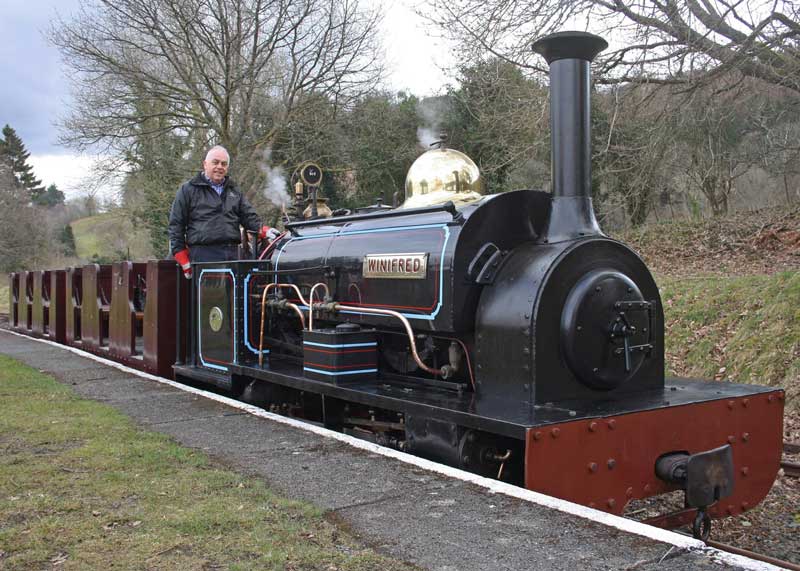
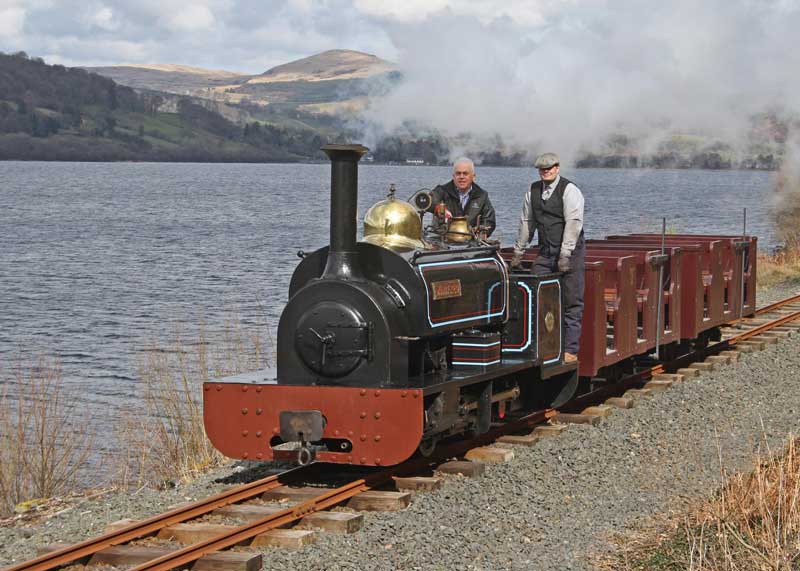
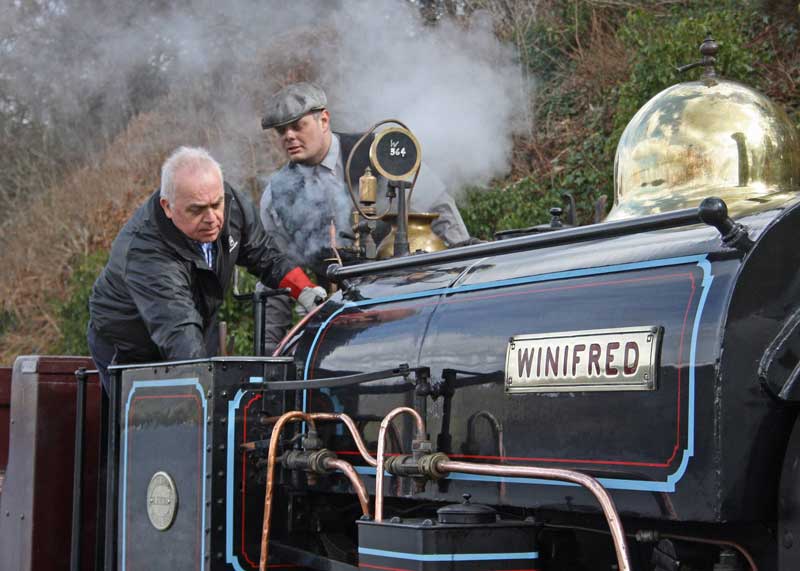

As the operational season really gets going, the Wednesday Gang and Working Weekends come to a close, and those in March achieved a great dealand on schedule.
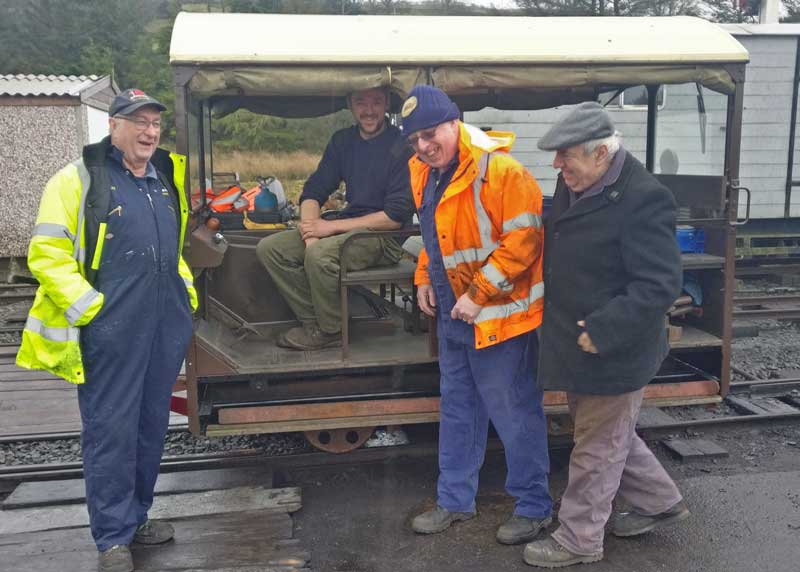
Those attending the working weekend were split into three gangs for varied tasks, and it is of great note that amidst the assembled were three father-and-son combinations, which bodes well for the future. Among the myriad jobs finished, the Bala Station sign was rehung (not as easy as it might sound), 87 sleepers were replaced between Llangower and the overbridge and, after digging deep foundations for the new signal lever hut at Llangower, concrete was poured. The erection of the new signal hut commenced at Llangower a few days later.

Nothing is done by halves. The third gang got seriously busy with tree pruning along the stretch of line that passes the sailing club at the Bala end of the line.
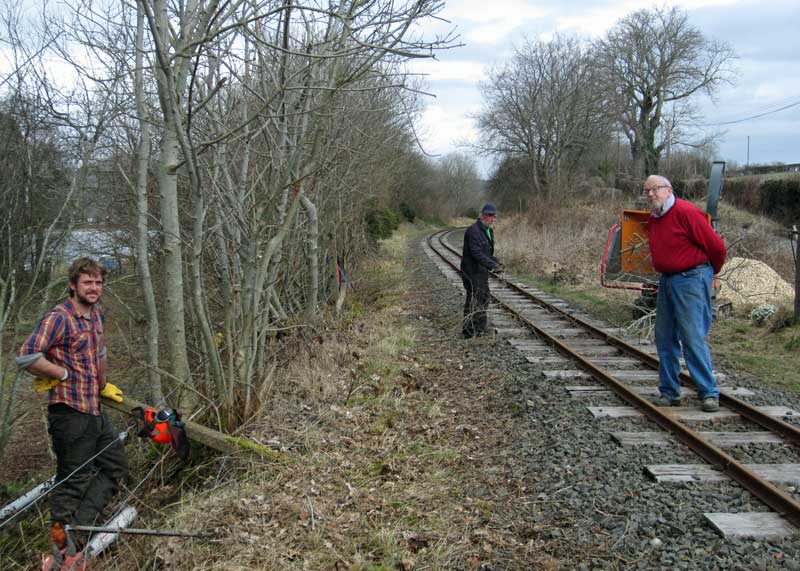
On top of all this frenetic activity, new doors have been fitted to the station end of the carriage shed, thus complimenting those at the end of the new shed extension. It goes to show just how much can be achieved with enough volunteers, all of whom shared the same positive mind-set. Traditional BLR tea and flapjacks helped, of course.
Visitors to the railway and the website may have spotted four new sets of wheels outside the loco shed, a routine occurrence, it might be argued, but there is more to this than meets the eye.
While all the operational locos, including the diesels, have to have yearly inspections, all the passenger rolling stock, together with some of the more important industrial heritage stock, is also checked carefully. Every coach is lifted off its bogies for a thorough examination, the couplings are checked as well and brake lines are subjected to close scrutiny. Add into this equation, each wheel-set may need reprofiling back to the original shape every two years or so.
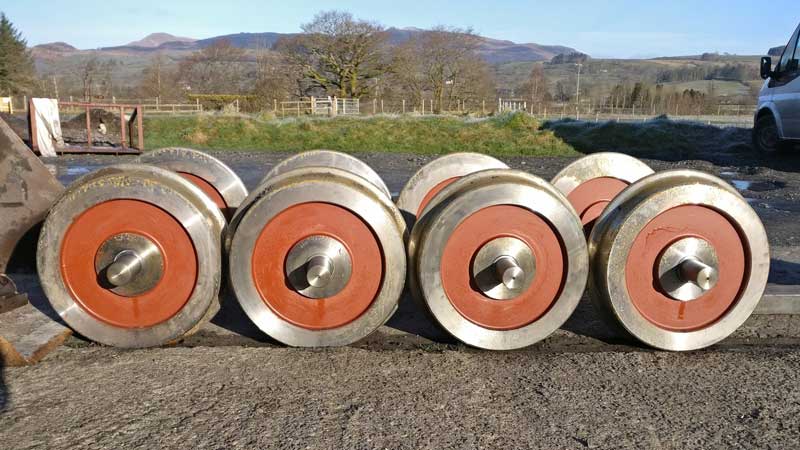
As a metal ‘tyre’ wears, albeit by a scarcely visible amount, the flanges gradually find themselves more prominent, the consequence being that if not regularly checked, their increased profile could, in extremis, touch point-work and sleepers, with possibly interesting consequences. On one coach, it was found that the wear of the ‘tyres’ (the running surface and flange of the wheel), was beyond practical amendment, hence a new set of wheels and axles was ordered from a Wakefield company called Ian Howitt Engineering.
Our locomotives are performing as per usual standard, and the only excitement is that Maid Marian is to receive shortly a new welded water tank as the old one has been found to be, to use the delightful euphemism, ‘a bit thin in places’.

The new tank is due to be fitted during April, and Maid Marian will then be refitted again with her full cab. You may recall that, for last year, she ran in open cab form, exactly as she did when operating at the Dinorwic Quarry a century ago. The engineering team is also constructing a new back plate for the cab as the old one had suffered the effects of years of ‘liquid sunshine’.
On the diesel front, Chilmark is thought to be near the end of her enforced lay-off after the source of an elusive knock from the engine may have been found. A lot of items were checked, including the three individual cylinder heads, and then attention turned to the injector pump, a refurbished item fitted when she received her ‘new’ engine a few years ago. The pump was stripped but nothing untoward was found. Rob Houghton’s attention then turned to the pump drive from the camshaft, a delicious group of skew and bevel gears, amongst which an amount of play was discovered, not only in the gear teeth but also the ‘keys’ on to which the gears are placed. For a 1939 machine, it is surprising that some parts are still easily available, from suppliers whose positive attitudes are a lesson for some car dealers. It is hoped that April will see Chilmark returned to health and service.
And finally……. it seems that nobody is immune from unwanted scrutiny these days. The BLR live webcam (accessible from the website) provides a great deal of enjoyment to those who just want to see what is happening. Unfortunately, the C&W team were taking a well-earned (brief) rest with tea on one of the seats outside the station when they were spotted ‘live’ by one of our stalwart volunteers who was relaxing at home. The consequent, innocent comment on Facebook prompted a degree of ribaldry and humour which, if nothing else, shows that many follow the BLR in its daily progress. However, it seems now that even a quiet cup of tea is not without an audience.

